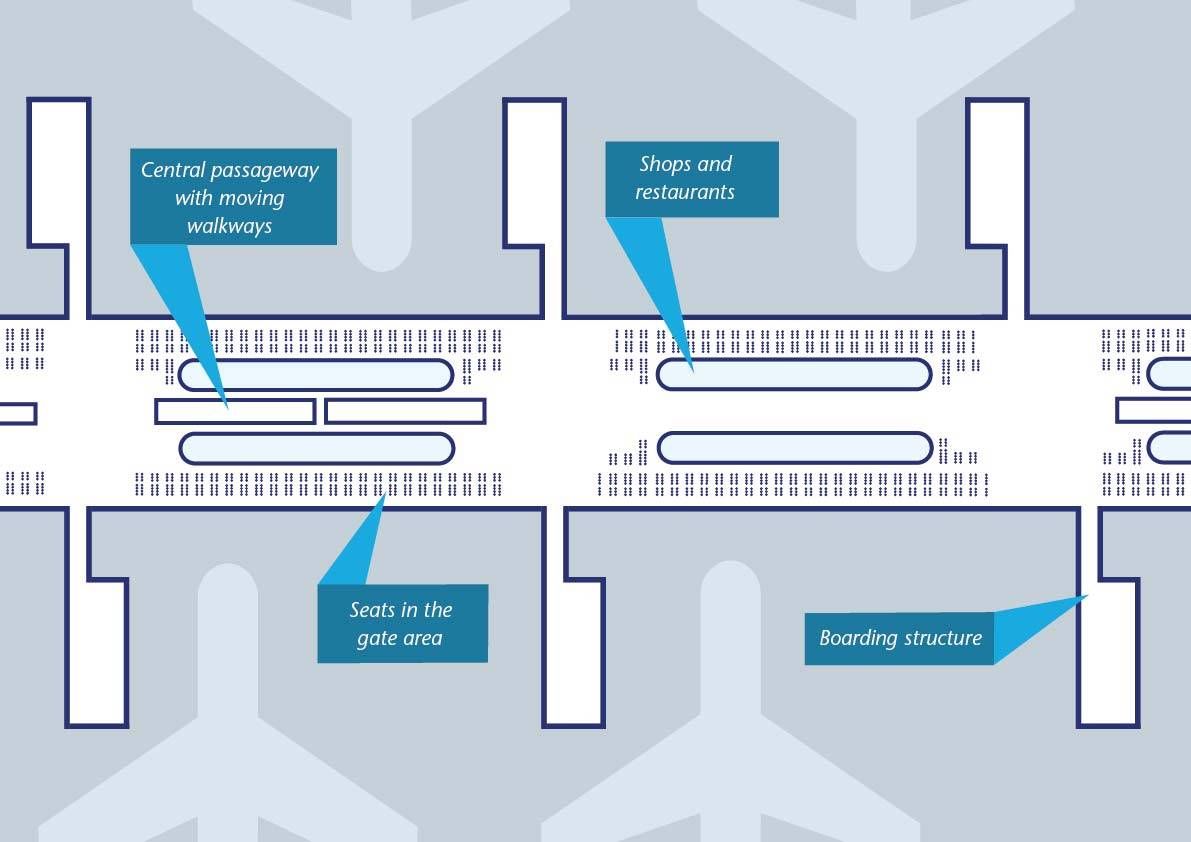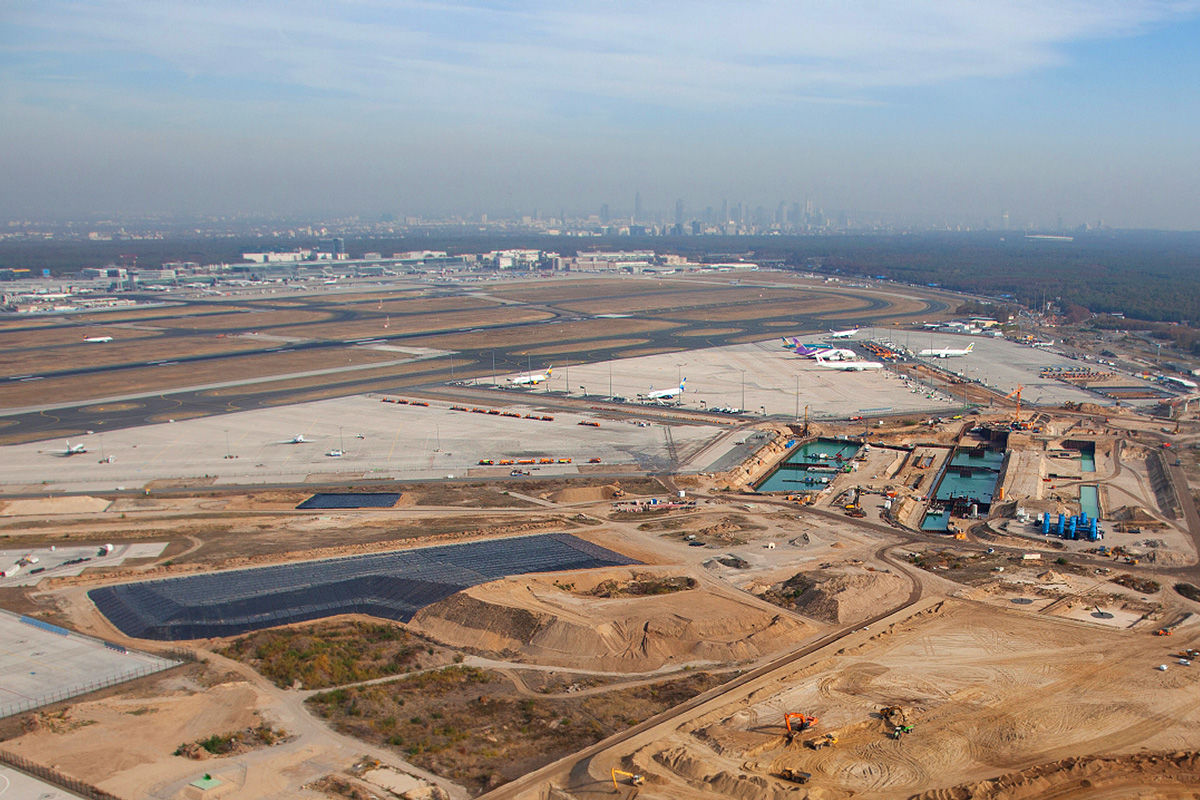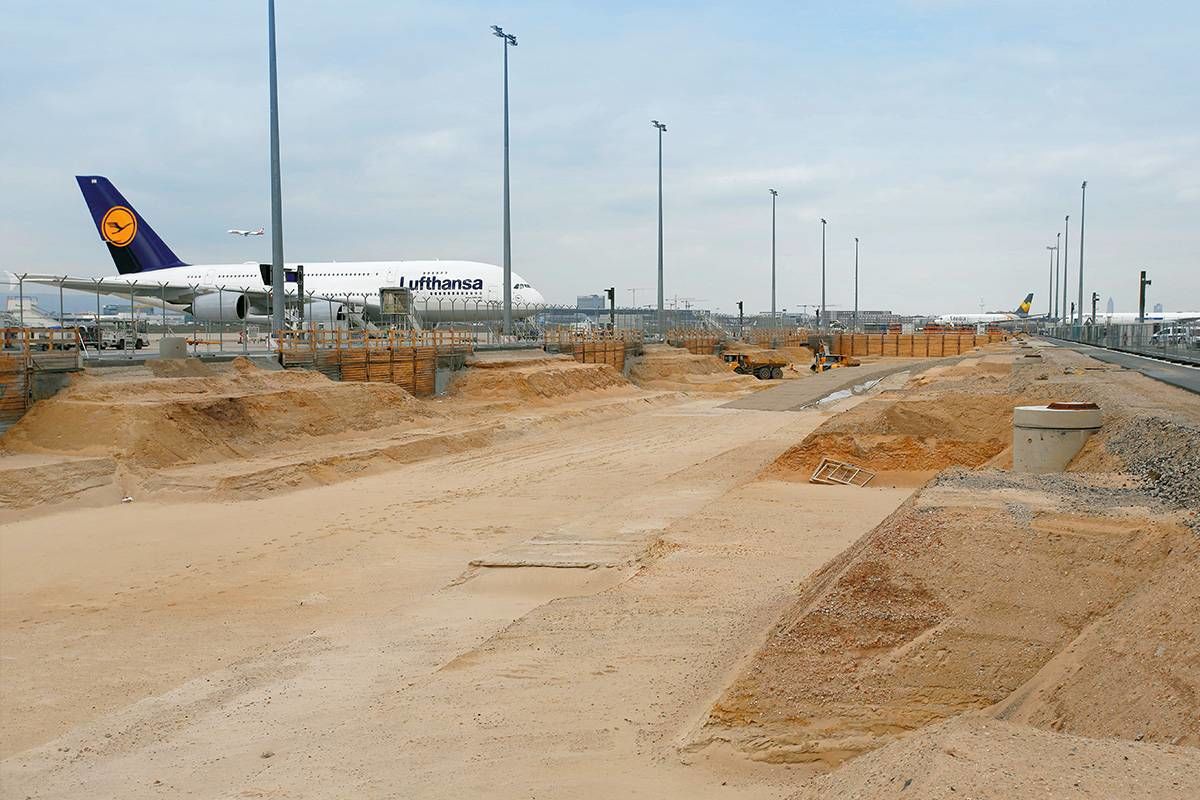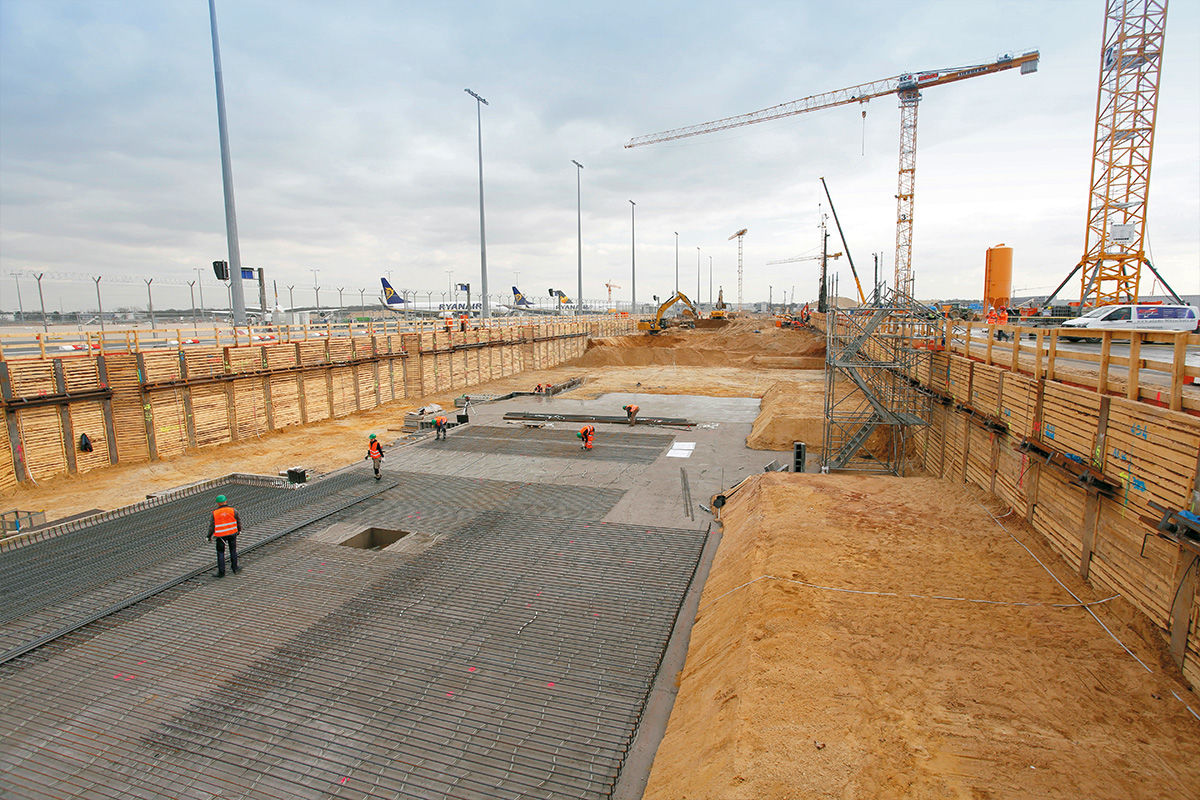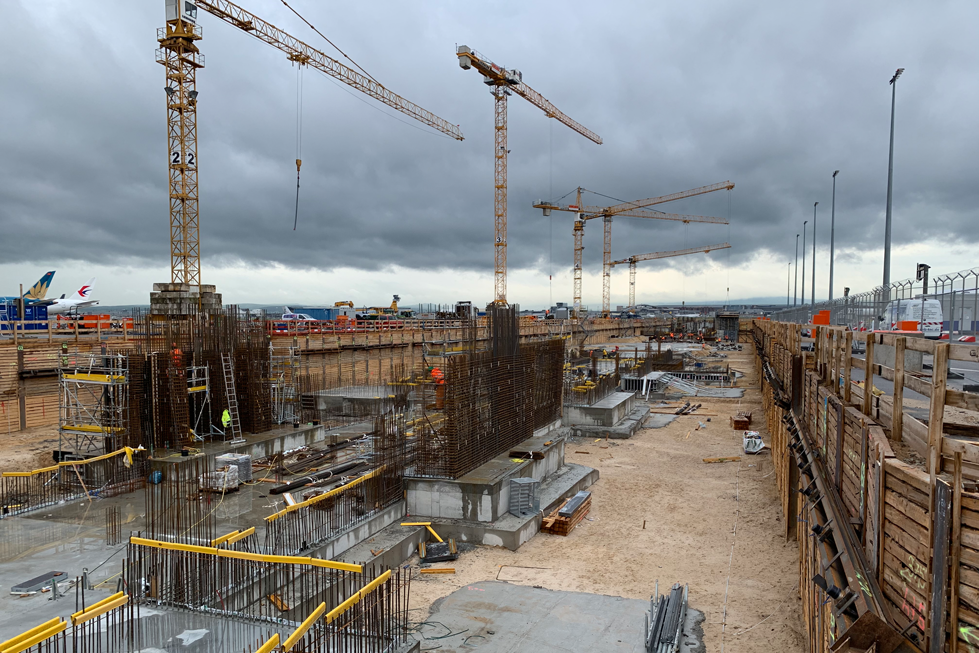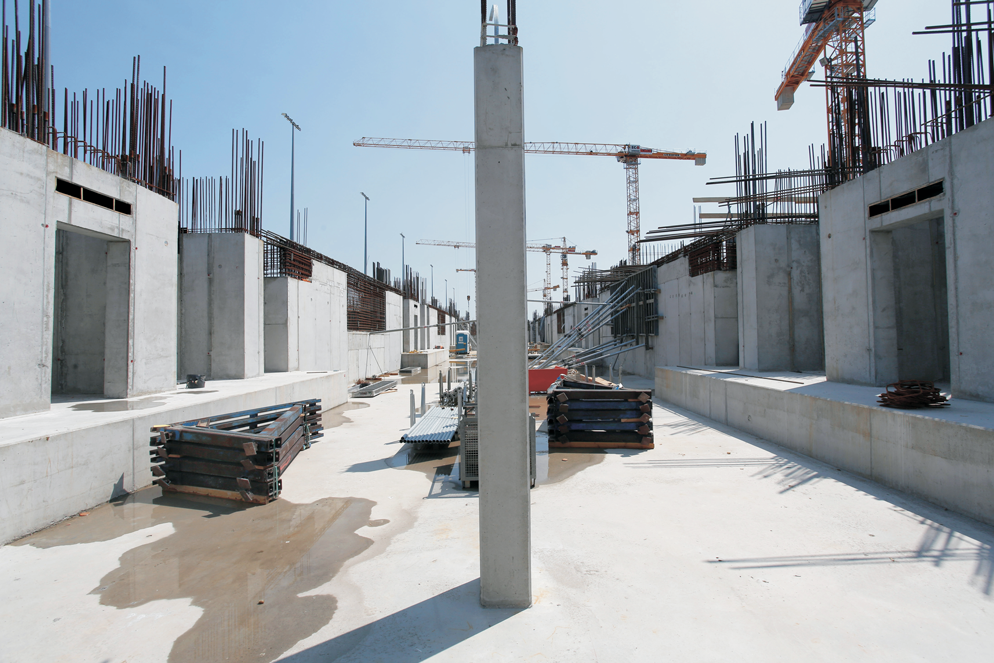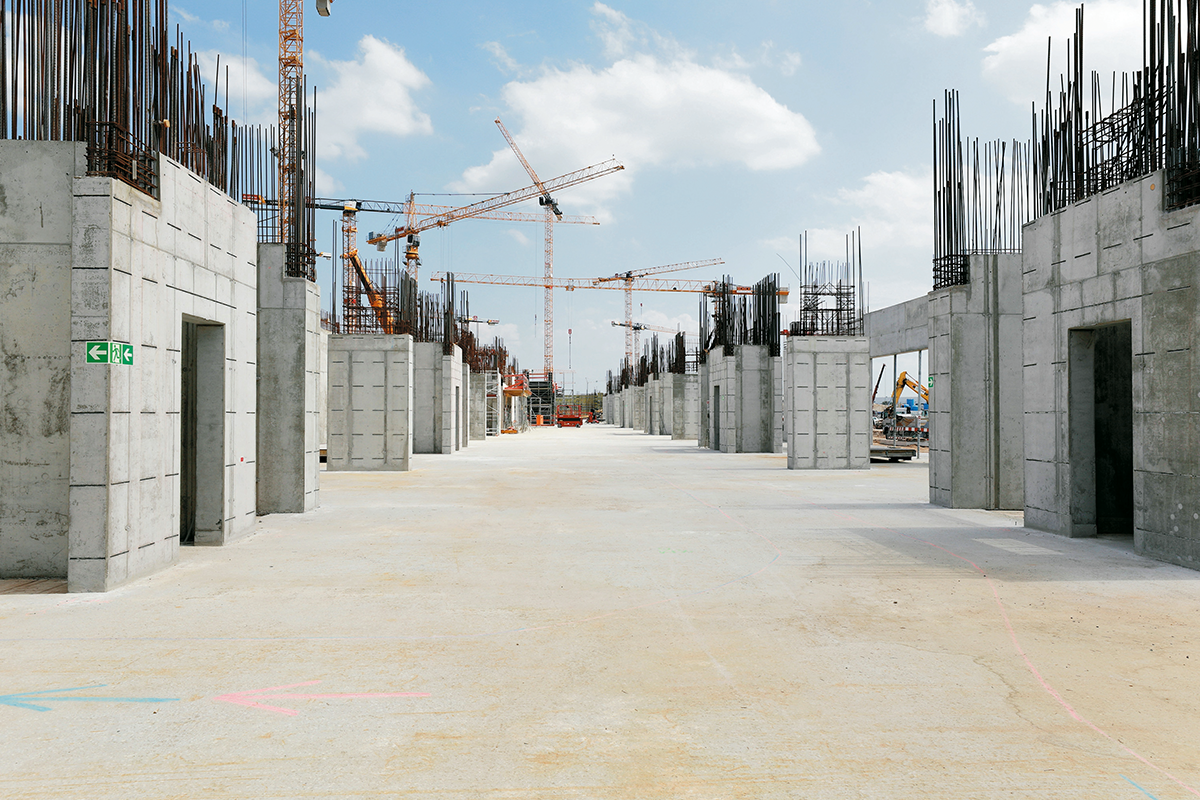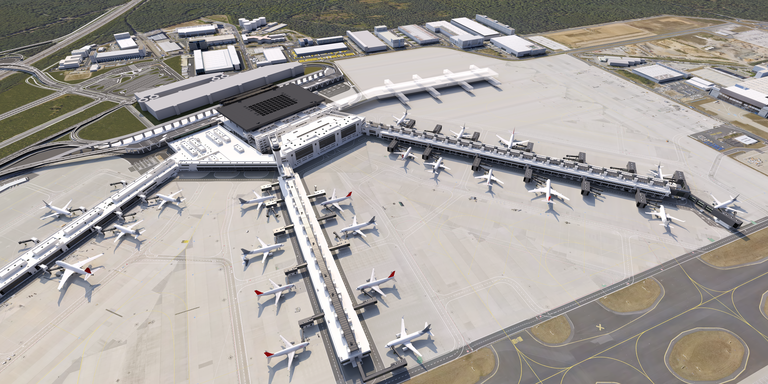
Many Parts Combine to Form a Whole
Piers H and J of Terminal 3 in the south of Frankfurt Airport will therefore boast a total of 24 new adjacent docking positions, four of them able to accommodate extra-large aircraft. Passengers will also enjoy maximum comfort and convenience in the new piers
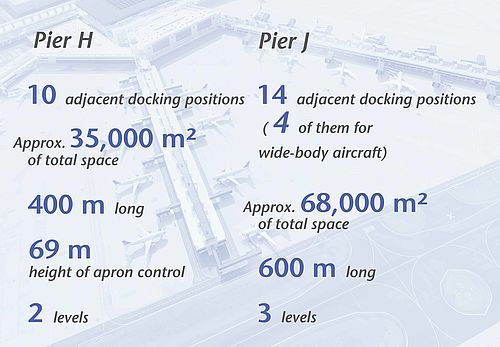 with total floor space of around 103,000 square meters.
with total floor space of around 103,000 square meters.
The piers will have different lengths, with the shorter one (Pier H) extending 400 meters and its larger mate (Pier J) stretching 600 meters. Moving walkways will let travelers quickly navigate the considerable distances involved.
Like road traffic, all vehicles using the apron must observe a set of rules―and that naturally includes aircraft. The apron tower at Pier H is therefore almost 70 tall to provide a good view of the area around Terminal 3.
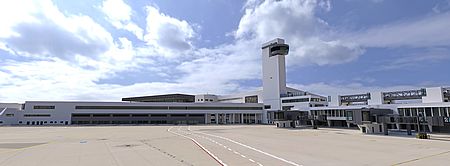 The apron control tower, with a height of 69 meters, provides an overview of the southern portion of the airport apron.
The controllers require a good vantage point for monitoring all of the planes on the ground and make sure that they taxi around and move in and out of parking positions in a safe and orderly manner.
The apron control tower, with a height of 69 meters, provides an overview of the southern portion of the airport apron.
The controllers require a good vantage point for monitoring all of the planes on the ground and make sure that they taxi around and move in and out of parking positions in a safe and orderly manner.
From Terminal 3 to the World
Besides having different lengths, the two piers will also vary in height. Pier H comprises two levels, while its bigger mate Pier J features an extra story for travelers arriving from and heading to destinations outside the Schengen zone. It therefore has its own, separate lane for arriving passengers. This will prevent Schengen and non-Schengen travelers from mingling, like in the two-car Sky Line train.
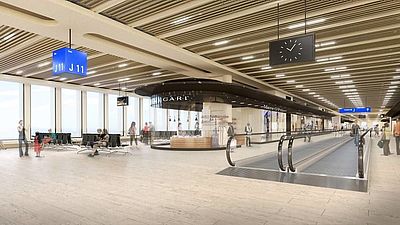 The clear structure and architecture of the piers help travelers find their way and ensure that they have a pleasant journey. Source: Fraport AG / © Christoph Mäckler Architekten
The clear structure and architecture of the piers help travelers find their way and ensure that they have a pleasant journey. Source: Fraport AG / © Christoph Mäckler Architekten
A modern interior architecture with a consistent structure will make it easy for passengers to find their way. The gates and waiting areas will be located along the sides. Shops and restaurants will line a central passageway equipped with a total of 36 moving walkways – extending all the way to the end of each pier. The individual moving walkways will be up to 47 meters long and 1.20 meters wide.
Like in the main terminal building, the design―with an attractive mix of natural stone, steel and concrete surfaces―evokes a timeless, high-quality ambiance. Passengers landing or taking off at Frankfurt Airport, if they look closely, will also be able to spot another special architectural highlight of the two piers: expansive flat roofs planted with vegetation.

All the Way Up
Construction of the pier itself, together with the integrated apron control tower, begins in January 2019. The shell of Pier J has also started to take shape during the first half of 2019, and the plans call for it to be completed within 24 months. The exterior walls and building systems will be concurrently installed.
“The decision to grant the construction permit for Pier H was the starting gun for building the shell of Terminal 3. From January 2019 on, following large-scale underground engineering work, it will gradually grow skyward.” Dr. Stefan Schulte, Executive Board Chairman of Fraport AG.
Connecting Piers
 Christian Bierend, Project Manager Main Building, explains the construction process for Pier H. (April 2019)
While the piers are being built, existing aircraft parking positions close of the construction site continue to be used. As a result, absolute precision is a must to ensure safety when heavy machinery is being operated next to parked airplanes.
Christian Bierend, Project Manager Main Building, explains the construction process for Pier H. (April 2019)
While the piers are being built, existing aircraft parking positions close of the construction site continue to be used. As a result, absolute precision is a must to ensure safety when heavy machinery is being operated next to parked airplanes.
The work to build the pier shells is special in at least one aspect: unlike the approach taken for ordinary buildings, they are not erected in one go. Instead, first a number of smaller structures are built alongside one another. These all look pretty much the same―in the case of Pier H, they might be described as “identical septuplets”. These seven buildings will later be joined to create a single seamless structure with a length 400 meters. Although this approach is more complex in the initial stages,it enables a number of structural simplifications during the subsequent finishing work and later use of the pier. This is because, among other things, there is no need to include expansion joints to allow the materials to swell and shrink in response to changing temperatures. The building systems can therefore all be installed at the same time.
Pier J is even larger, comprising eight substructures. Work will proceed concurrently on all of them, which naturally calls for close coordination. They will initially be spaced a meter apart, and then joined after the concrete has cured.
This interactive informational graphic shows how the piers H and J are built. Click on the numbers to learn more.
Tough as Steel
The shell construction of the individual partial structures is as tough as they come. Work starts at the very bottom of the cellar and continues upwards from there. The walls and columns in the basement of Pier H were largely completed in the late summer of 2019. Now it's time to "top it off"! But before the next level can be built on the cellar, formwork workers reinforce the cellar ceiling with reinforcing steel. This ensures a stable and load-bearing concrete. For the rest of the building construction on the Terminal 3 site, both pre-fabricated concrete elements and constructions manufactured directly on site will be used. The so-called "in-situ concrete" is still liquid concrete, which is mainly produced fresh on site and then poured into a mould. A vibrating plate then removes air bubbles from the poured concrete and carefully solidifies it. Together with the finished components, Pier H continues to grow upwards, closely followed by Pier J. A total of 24 boarding structures will then be added along the sides of the long piers. Jet bridges will make it easy for passengers to get in and out of docked aircraft.
Under Control at All Times
Whenever aircraft move on the apron, the apron controllers are in charge! They keep a close eye on the complex traffic on the taxiways at all times and guide the pilot along the way. And especially at Germany's largest airport you need a good view: after all, an average of 1,400 aircraft took off and landed here every day in 2018. Since the new Terminal 3 will also increase ground traffic in the south of the airport in the future, a new apron control tower will be erected. It will
 Timo Ziegler, Construction Manager at Anton Schick GmbH + Co.KG, offers some insights into the construction of the piers and the apron control tower. (October 2019)
be part of the Pier H building. As a result, construction of the pier and the new tower have to go hand in hand. The first four floors of the control tower will be integrated into the pier, after which it will grow independently to its total height of almost 70 meters towards the sky. The tower will be built from the fifth floor onwards with so-called climbing formwork. The external concrete walls are constructed on site and then placed on top of each other, floor by floor. A 65 meter special crane is on site to bring the concrete parts to their intended position. To ensure that this crane will later reach up to the upper floors, it will later be extended by 20 meters. The crane operators then have to work with millimeter precision at dizzying heights.
Timo Ziegler, Construction Manager at Anton Schick GmbH + Co.KG, offers some insights into the construction of the piers and the apron control tower. (October 2019)
be part of the Pier H building. As a result, construction of the pier and the new tower have to go hand in hand. The first four floors of the control tower will be integrated into the pier, after which it will grow independently to its total height of almost 70 meters towards the sky. The tower will be built from the fifth floor onwards with so-called climbing formwork. The external concrete walls are constructed on site and then placed on top of each other, floor by floor. A 65 meter special crane is on site to bring the concrete parts to their intended position. To ensure that this crane will later reach up to the upper floors, it will later be extended by 20 meters. The crane operators then have to work with millimeter precision at dizzying heights.
The advantage of climbing formwork: Due to the repetitive work steps, the new apron control tower will grow ever faster in height. According to current plans, the first twelve levels will be completed by autumn 2020. In these areas, the elevator and staircase will later be joined by the necessary technology. Floors 13 and 14 will then comprise the windowed pulpit, which protrudes about six meters above the main body of the tower. It serves as a workplace for the apron controllers and is therefore equipped with inclined glass panes all around. This provides a 300 degree view of the surrounding airport area. For the controllers, the view towards the apron is particularly relevant.
For the construction of the tower, the pulpit poses a special challenge for the shell workers: they have to work at great heights with elaborate special formwork. This will foreseeably take more time than all the previous floors. To ensure that the construction workers involved are optimally prepared for the challenging tasks, there are special training courses and a supporting scaffold at a height of 70 meters.
From the Outside In
Work to install the building systems will begin as soon as the shells of the piers are finished. They include state-of-the-art heating, ventilation and air conditioning (HVAC) as well as plumbing and safety equipment. Special features like circadian lighting control, which emulates the progression of natural daylight to help mitigate the symptoms of jetlag, will also be installed. After their completion in 2024, passengers will then enjoy a new feel-good ambiance in Piers H and J when departing from Frankfurt Airport’s new Terminal 3.
More

